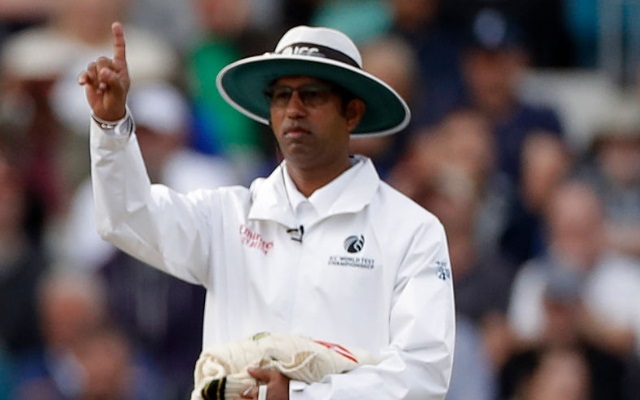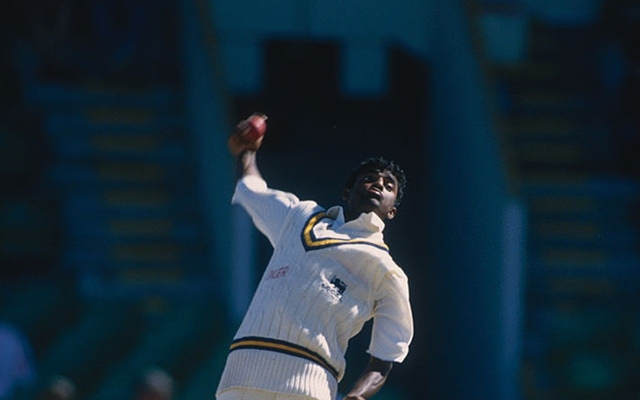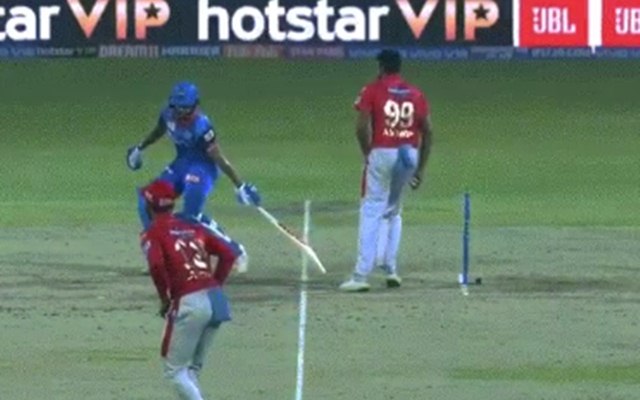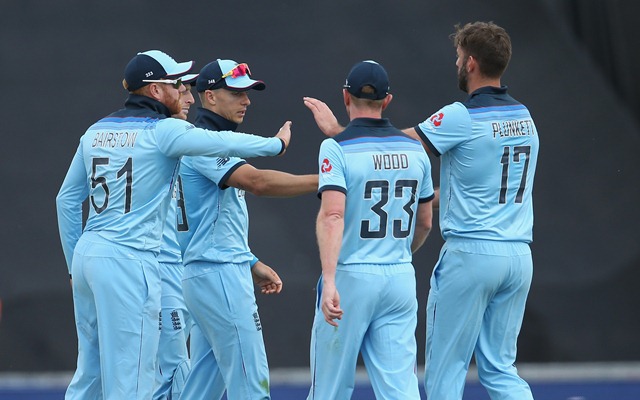Six most controversial rules in cricket
Cricket is full of rules and some of them have been frequently being debated. In this piece, we break down a few of them.
9 Min Read


Umpire giving out. (Photo by Ryan Pierse/Getty Images)

There is a saying that introducing cricket to a person who hasn’t ever watched it is really difficult. It is based upon the fact that the game is so complex and has so many rules that a new viewer might get confused. But, despite all these complications of remembering all the rules, cricket has been loved and watched by more than 2 billion people in this world right now.
But, with those many eyeballs, whenever something happens, it is bound to get several opinions and points of view. Some of these rules hence have gone to become controversial. In this piece, we will look back at some of the rules which have come under scrutiny for the absurdness around them and also altered and talked about a lot of times by fans, players, journalists, and officials.
Here are the six most controversial rules in cricket:
1. Umpire’s call

Umpire’s call is one rule in cricket that has been in the news for quite some time now. The rule states that when a DRS is being checked if the impact and the spot where the trajectory of the ball is going past the stumps are in a particular spot then it will be the umpire’s call instead of being called hitting or on- line.
The updated rule suggests that if more than 50% of the ball is hitting the wicket zone, then the call will be given as out. And if less than 50% of the ball is hitting the wicket zone then the call will be given as umpire’s call, which means the original decision of the on-field umpire will be considered. Now, if you think about this, there can be at times inconsistency with some decisions.
As a result, the rule has often been called out by players and fans to be removed. However, the ICC has persisted with the rule despite all of that and they even increased the wicket zone to accommodate the umpire’s call. The main reason why this exists is that there have been calls the ball tracking system which is in use can’t be 100% accurate on all calls. Hence, when less than 50% of the ball is in the wicket zone, there is a sense of doubt and the TV umpire can’t really overrule the decision of the on-field umpire in that situation.
2. DLS Method

When one-day cricket matches became more and more popular among the fans, there was a rule initially which seemed quite unfair to one of the two teams. It was the rain rule. Initially, the rule which was applied when the match was affected by the rain was quite simple but not practical. The team batting second will have a target of say 130 from 25 overs if the team batting first had set a target on 260 from 50 overs. That rule was the average run rate rule.
After some time, we had the rain rule, which removed the least productive overs from the team batting first. This was the controversial rule which shaped South Africa’s exit in the 1992 World Cup semi-final. Because it happened at the huge stage, where stakes were high, it seemed only obvious that something should be done in order to fix this rule.
As a result, British statisticians Frank Duckworth and Tony Lewis came up with a mathematical solution to the whole rain situation. The new rule did take all the factors concerning the match into account and was mathematically fair, but confusing for the teams and fans at times. In 2014, some more changes were made to the existing rule after the addition of the works of Australian statistician Steven Stern. Thereafter, the name of the rule was devised to be Duckworth-Lewis-Stern or DLS method.
3. Mankad rule

Ah! The famous or infamous as some may call, the Mankad rule. Now the rule is pretty simple. It suggests that if a non-striker is backing up too far out of his crease while the bowler is about to bowl, the bowling team has the right to run that batter out before delivering the ball. The name of the dismissal has been kept as mankading, which by the way is not the official name of the dismissal and is just an informal one, based on Vinoo Mankad.
The former Indian cricketer was the first ever to attempt to get a wicket by this rule in 1947-48 against Australia. There have only ever been eight such instances in international cricket after Mankad did it. Despite the rule existing in the holy book of cricket rules, players have been criticized for doing it. And often we see, the debate around the spirit of the game ignited whenever there is a player who attempts to get a wicket in this manner.
Now, there have been polarising opinions around this subject in the cricketing fraternity but yet, it has been backed by players. In all trueness, the batter who is backing up early is trying to gain an advantage, which by law in sport should not be permissible. But, there is also the fact that as the bowler is in the run-up and he decides to pull out of his action to dislodge the bails, he or she is in a state where the ball is essentially dead. The bigger question is can someone really get out if there hasn’t been a ball delivered? Even in 2021, this question remains unsolved.
4. Tie-breaker rule

For the longest, cricket was a game that never really was desperate to get results. Much like football or hockey, if the scores are level at the end of the game, it was considered to be a tie and the honors were shared between the two sides. To understand how little we cared about results in cricket, one just has to see the number of drawn Tests everyone had to go through to get spicy wickets.
But when T20 cricket came around, cricket thought of having an exceptional rule for breaking ties and getting a result (it should be noted that usage of the word exceptional is sarcastic in this sentence). There was a time when there were bowl-outs where a tied game would be decided by five bowlers delivering one ball each at the stumps, without a Batsman and whoever hits the stumps more times, wins.
There probably hasn’t been a stupider way of deciding a cricket match. Oh wait, there was. And it happened in the World Cup final; the amazing boundary count rule which helped England win their first-ever World Cup. That rule has now been removed and the current super over rule states that the teams will play super over multiple times if it is tied. But, what is forever, is the fact that New Zealand was deemed runner-up unfairly and England’s biggest triumph will always have a stamp of ‘did they really win it?’
5. Chucking rule

There is a rule for illegal bowling action in cricket but it was a huge controversy back in the 1990s which brought about this rule in the ICC’s books. Before the 1990s, there was enough technology available for actually having a rule on bending the arm. But, it took calling out one spinner in an international match, which made ICC take a deep look at the rules.
Muttiah Muralitharan was called out in a Boxing day Test match in 1995 because the umpires thought that he was chucking, which basically means bowling with an illegal action. Now, what transpired after this was extremely controversial. The spinner was tested and cleared by the ICC but a few years later when he traveled back Down Under, he was called once again.
All of that came to a single match when Sri Lanka captain Arjuna Ranatunga decided to pull his team out of the match after Muralitharan was called by the umpires. The continuous calling out of no-balls frustrated Ranatunga and the situation got a little out of hand on that fateful day in Adelaide. The current rule suggests that the bend of the arm can’t be more than 15 degrees for any bowler by delivering a ball. Anyone who is suspected of an illegal action is taken to a lab, checked, and cleared to bowl only if the action is deemed legal.
6. Underarm rule

For ages, bowling underarm in cricket was not a thing. Until one day in Melbourne when Australia played New Zealand in 1981. Greg Chappell was the captain of the Australian team and he asked his brother, Trevor Chappell to bowl the last ball underarm when New Zealand needed seven to win from the last ball.
Greg informed the umpires and the officials further informed the New Zealand batters about the decision. The infuriated Blackcaps batsman, Brian McKechnie played the last ball out but Greg Chappell was bombarded with criticism from corners of the world. His own brother and former Aussie player, Ian Chappell, who was commentating at the time, said on air, “No, Greg, no, you can’t do that.”
Though the rule existed in the ICC’s book, it had no existence in the rules set for the Benson Hedges Tournament which this match was part of. This was the only incident that got so much attention from the media. The chapter remains an infamous incident that was criticized by everyone who could give an opinion on this matter and continues to be so.
Download Our App